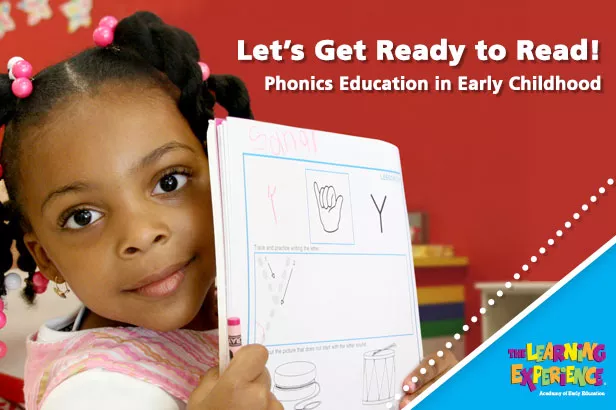There are so many exciting things happening in October! Pumpkins are everywhere, leaves are changing color and the air is beginning to feel crisper. At The Learning Experience, October is also exciting because it’s when we begin our Fun With Phonics® curriculum program with our Preschool age students. What is phonics education all about? Phonics in early childhood focuses on helping children understand that sounds and letters have a relationship. Through phonics, students learn that written English consists of groups of letters that represent a series of sounds, and that these sounds get translated into a meaning. Phonics education sets the stage for reading. The National Association for the Education of Young Children and the International Reading Association, in a joint position paper on learning to read and write, emphasized the importance of phonics education. Careful planning and instruction are essential, they concluded, and children need “…exposure to books, rich conversations, experiences in drawing, pretend play, and other symbolic activities, and instruction in recognizing letters and making connections between letters and sounds.” At The Learning Experience, we offer our preschoolers a rich and engaging environment and curriculum that is conducive to developing important pre-reading skills. Fun With Phonics exposes students to a variety of language learning strategies to allow students to make connections between phonics and their everyday experiences. Songs, posters, puppets, sensory activities, and much more all combine in a systematic and sequential way to develop our students into strong readers. What can parents do at home to help with the pre-reading process?
- Foster a love of books and reading. Show your child how much you value reading by having a variety of books and magazines in your home. Visit the library and bookstores often with your child.
- Read aloud daily with your child. Allow your child to select books that interest him or her. Read the stories and talk about the words, letters, and sounds. For example, ask your child, “Do you see a word on this page that starts with the same letter as your name?”
- Play “I Spy,” searching for objects that begin with different letter sounds. You can say, “I spy something that starts with the letter T,” or provide other phonics clues to help your child guess what it is.
- Play with letters. Use magnetic letters to make a three-letter word on the refrigerator (e.g., cat). Have your child read the word and use it in a sentence. The next day, change the beginning letter of the word (e.g., hat). Each day, challenge your child to replace one of the letters and then read the new word.
- Look for letters in your home or neighborhood. Point out and talk about the letters you see and the sounds they make as you read words on signs, labels, menus, and the TV.
Phonics education is important in the development of your child as a strong reader. While phonics education is systematic and sequential, it can also be fun and engaging. Your child’s teachers and you can work together to promote reading success and to help your child become a lifelong reader. Related Post: Learning Bags and the Benefits of Show and Tell in Early Childhood Education
Back to BlogDon’t forget to share this post!

Sign up for our newsletter!
Stay connected with our early education resources
